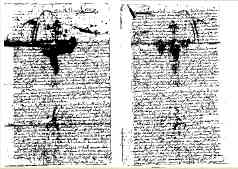
Cotrim Bahia
The known branch of the Cotrins of the Bahia has origin in the high bahian hinterland.
A certain Antonio is its patriarch Xavier de Carvalho Cotrim, who would have left Portugal in 1 of February of 1735. It is known that Maria of Jesus married Angela, dead in 10/04/1751 with who had a son (Antonio). It is also known that it married again and he was living in River of Accounts, in the Bahia in 1771.(*)
Date of 2 of December of 1752 letter where Benedict Manoel Egas Jose de Carvalho Cotrim writes its brother, Antonio Xavier, through which can reconstitute to all history.
The descendants of Antonio if had fixed in cities that today are Guanambi, Caetité, Caculé, Brumado and others. In the end of century XIX, after the great drought, many had been changed and been to mainly try the luck with the coffee in São Paulo, if fixing in cities as Black River, Pitangueiras, Potato plantations, Black River and others.
(*) given collected for Pablo Alcobia Neves and Erivaldo Fagundes Neves
(below: facsimile of the above-mentioned letter)
